Humblebrag: I’ve got to meet every MLB mascot. Each one is a character. Many I’ve met at ballparks, but even more I’ve met at events like the Major League Baseball All-Star Game fan festival. Meeting them all is pretty cool. Most of them behave like animals!
Of the 30 MLB teams, only the Yankees, Dodgers and Angels lack a mascot. Yet, across time, they’ve had other characters pinch hit. Mascots who are not fan favorites occasionally get cut so hot prospect mascots can make an appearance.
Get to know the MLB mascots. They are all unique. Most are fuzzy and tall. They are all charismatic and love to take selfies. Maybe someday, you can get to know them in person, too!
1. D. Baxter – Arizona Diamondbacks
The Diamondbacks’ mascot was created by Brently Bell, the son of Jay Bell, one of the original players during the teams inaugural season in 1998. D. Baxter the Bobcat has double meaning. First, “D. Baxter” comes from the team’s short name, the D-backs. Then, “The Bobcat” comes from the original name of the stadium where the Diamondbacks played, Bank One Ballpark, nicknamed The Bob. Plus, bobcats are prevalent throughout Arizona. Baxter is known to be highly energetic and mischievous.
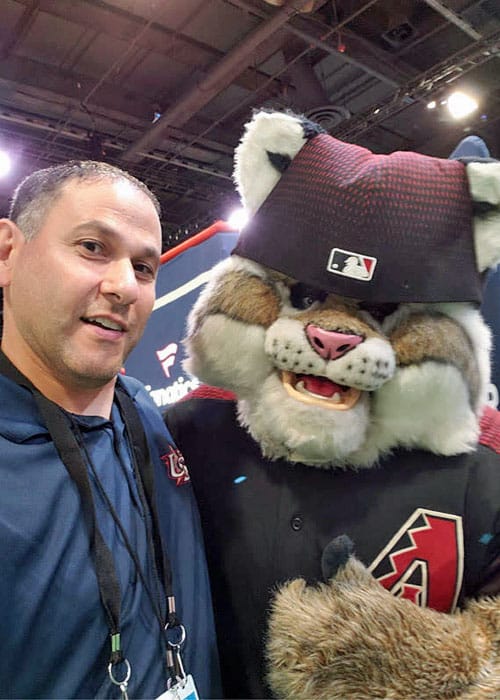
2a. Blooper – Atlanta Braves
Blooper was introduced on January of 2018 at the Atlanta Braves fan fest when fans used a special mascot making machine to create him. He’s a “product of science run amok.” He’s nearly 7-foot tall and wears a 5XL T-shirt. His favorite songs include “Take Me Out to the Ballgame,” “Georgia on My Mind,” “Midnight Train to Georgia,” and “The Devil Went Down to Georgia.” Blooper succeeded the “Homer of the Brave” mascot after he went into retirement.
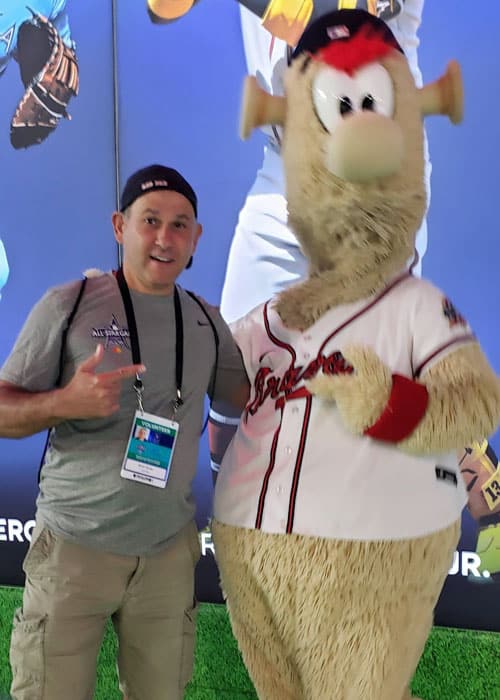
2b. Homer the Brave – Atlanta Braves
Homer was the mascot of the Atlanta Braves from 1989 to 2017. Homer’s full name is Homer the Brave, named after both lyrics from the national anthem and the nickname for a home run. Also, Homer is the first mascot I’ve ever seen drinking wine. He didn’t drink much, but he still passed out before the Charity Wines launch in 2008 attended by Chipper Jones and Brian McCann.
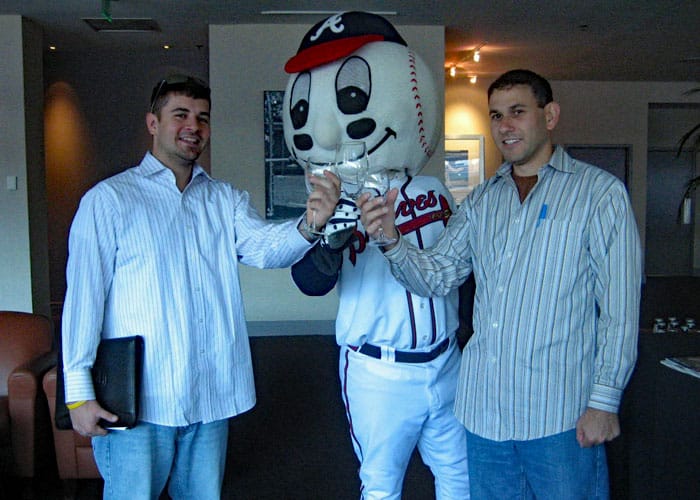
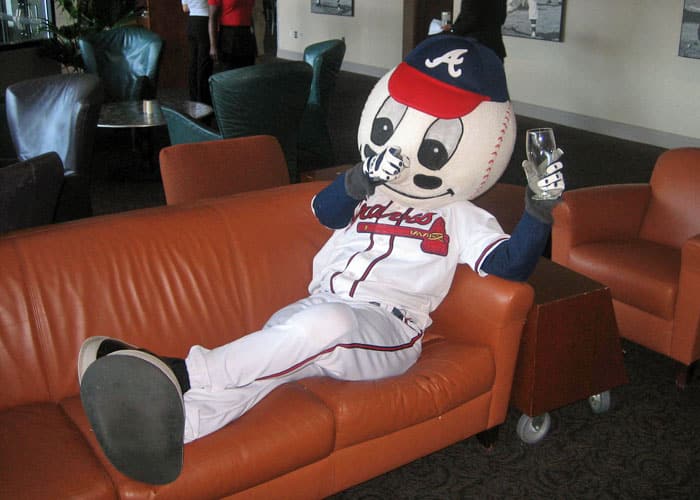
3. Oriole Bird – Baltimore Orioles
The Oriole Bird hatched from an egg at Memorial Stadium in Baltimore in April of 1979 and has been entertaining Orioles fans ever since. The bird’s hobbies include sliding on dugouts and munching on bird seed and crab cakes. He’s also a star athlete, claiming he can bat with both wings.
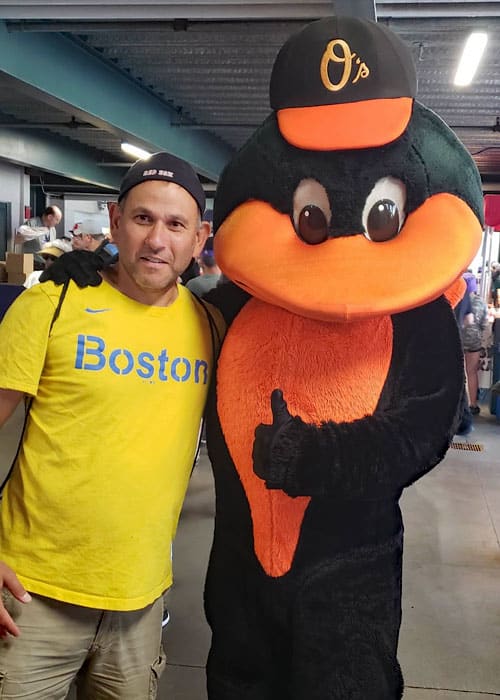
4. Wally the Green Monster & Tessie – Boston Red Sox
Wally the Green Monster debuted on Opening Day in 1997. Legend is that Wally was originally a huge fan who move inside the Fenway Park wall in 1947, the year it was painted green. After 50 years of living like a recluse, Wally came out as the monster he is today.
Wally’s sister Tessie debuted in 2016. Tessie is named for the Dropkick Murphys song “Tessie” which became the Boston Red Sox anthem during the team’s 2004 World Series run. The song tells the story of how the original Tessie with the Royal Rooters fan club helped the Boston Americans win the first World Series in 1903.
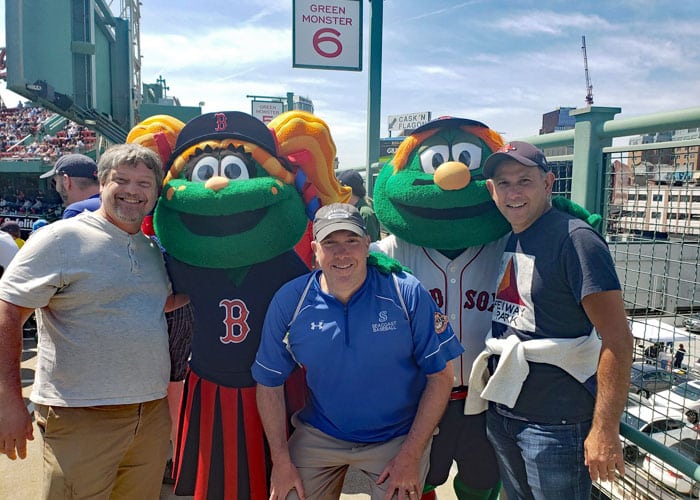
5. Clark – Chicago Cubs
Clark was introduced in 2014, and is the great grandson of Joa, the original live bear mascot for the Cubs back in the early 1900’s. Clark is a young, friendly Cub who wears a backwards baseball cap and greet fans entering Wrigley Field, located at the corner of Clark Street (for which he is named) and Addison Street.
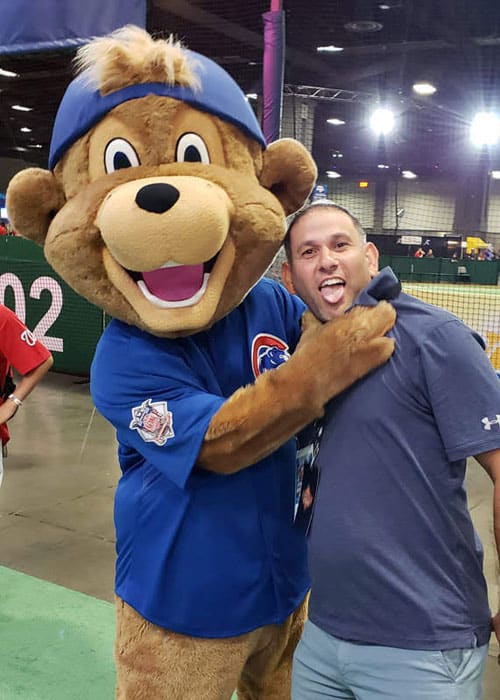
6. Southpaw – Chicago White Sox
Southpaw is named after a left-hand pitcher (referred to as a southpaw), and also a reference to Chicago’s South Side, where the White Sox play. Southpaw is a furry green creature usually found wearing pinwheel decorations that are a throwback to the “Exploding Scoreboard” designed by Bill Veeck at the old Comiskey Park. Southpaw was born in 2004, one year before the Sox won the 2005 World Series. Southpaw can run up and down each stair at Guaranteed Rate Field in 6 minutes and 13 seconds.

7. Rosie Red – Cincinnati Reds
Rosie Red is the female mascot of the Cincinnati Reds. She was introduced in August 2008 as friends of Gapper and Mr. Redlegs. Rosie’s name comes from a female fan, Rosie Janis, who became famous in the 1940s for cheering for the team, and is also derived from a female fan group founded to prevent the team from moving away from Cincinnati in the 1960s. Here, Rosie is holding a painting by Artist Justyn Farano of the legendary Reds catcher, Johnny Bench, entitled “Guardian of CinCity.”

8. Slider – Cleveland Guardians
Slider is the mascot for the Cleveland Guardians. As a pitch, a slider is a breaking ball that tails down through hitting zone. As a mascot, Slider is a large, furry fuchsia-colored creature with a large yellow nose and shaggy yellow eyebrows. He was born in 1990 with the Cleveland Indians, and stayed alive when the squad slid over to a new name in 2022 with the Cleveland Guardians.
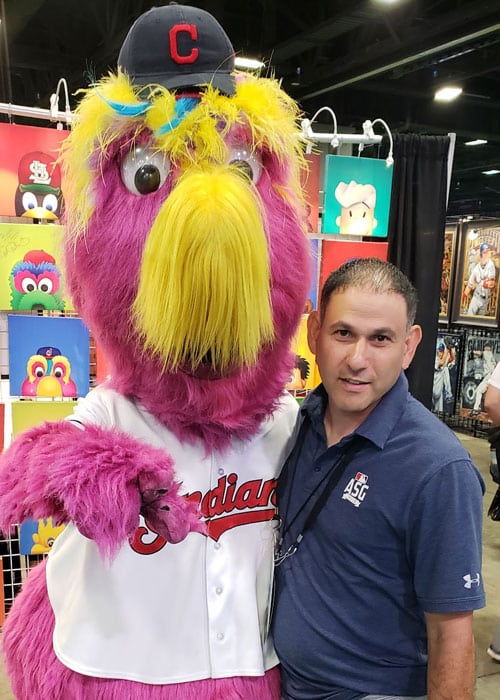
9. Dinger – Colorado Rockies
Dinger has been a home run with fans since he was hatched in 1994. This anthropomorphic purple triceratops dinosaur can spin his head all the way around, a crucial skill required to witness all the home runs hit within the mile high altitude in Denver. Dinger was inspired by the discovery of dinosaur fossils at Coors Field during its construction, most notably a 7-foot-long, 1,000-pound triceratops skull.
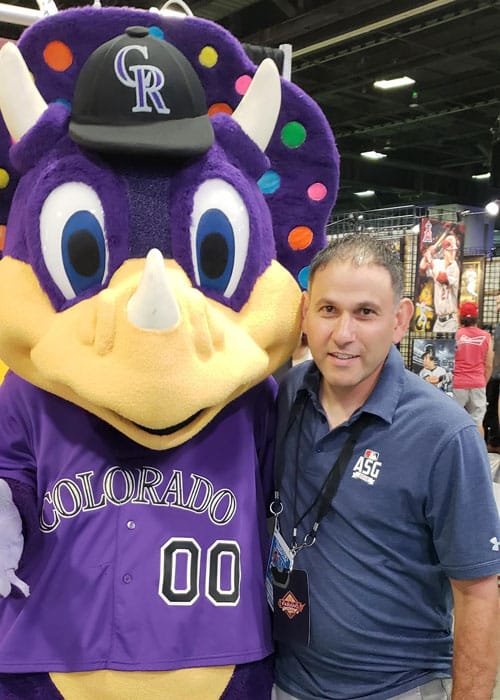
10. Paws – Detroit Tigers
Paws is the Detroit Tigers mascot who made his debut in 1995 at Tiger Stadium and now lives at Comerica Park. He wears a Tigers hat and jersey. He used to wear the jersey number of the current season, but changed his jersey number to 00 once too many of the years became duplicates of current player or retired player numbers. Paws enjoys collecting baseball cards and playing fantasy baseball.
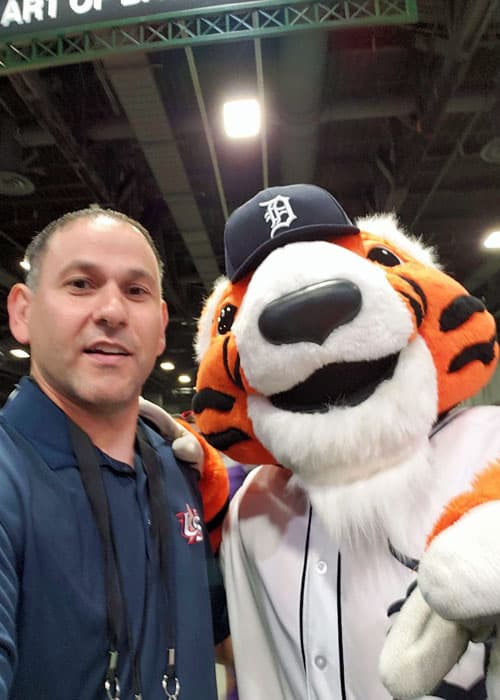
11. Orbit – Houston Astros
Orbit is a lime-green alien who wears an Astros jersey with antennae extending into baseballs. As far as we know, Orbit is the only mascot who admitted his own guilt of murder! During the last game of the 1999 season, Orbit zapped the other Astros mascot, General Admission, with an alien ray gun and killed him!
General Admission would often fire a cannon from his outfield platform to scare those seated near him. After the killing of General Admission, Orbit served his time. From 2000 through 2012, Junction Jack was the Astros mascot, which coincided with the Astros moving from the Astrodome to then Enron Field. When the Houston Astros made their move from the National League to the American League in 2013, Orbit was released and made his return. He has been beloved by Astros Nation ever since.
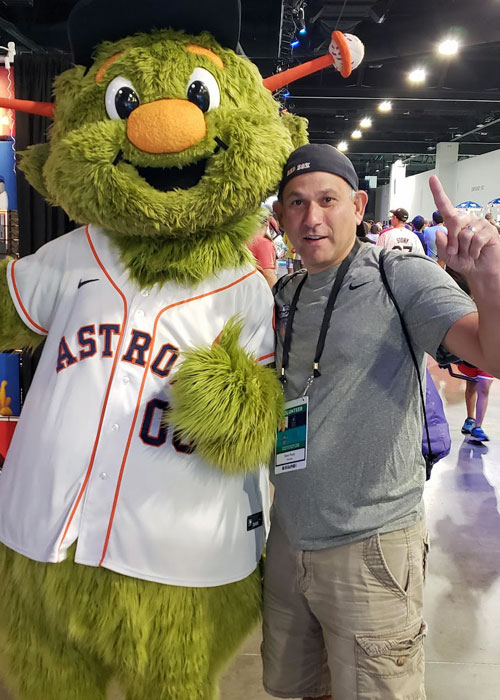
12. Slugerrr – Kansas City Royals
Sluggerrr, the King of the Jungle, measures up at 6’9″ and made his debut in 1996. His name is derived from the the word slugger, which is a powerful batter.
Slugerrr once injured a fan when he fired a hot dog into the stands and pelted him in they eye. The spectator sued the Royals, claiming that were negligent. A jury found for the team under the Baseball Rule, which limits spectators’ ability to sue teams for injuries arising from gameplay, but the Missouri Supreme Court reversed that decision, holding that a mascot’s hot dog toss is not an essential part of baseball. On retrial, a new jury found that neither the team nor the fan were at fault, and awarded no damages. Welcome to the jungle.
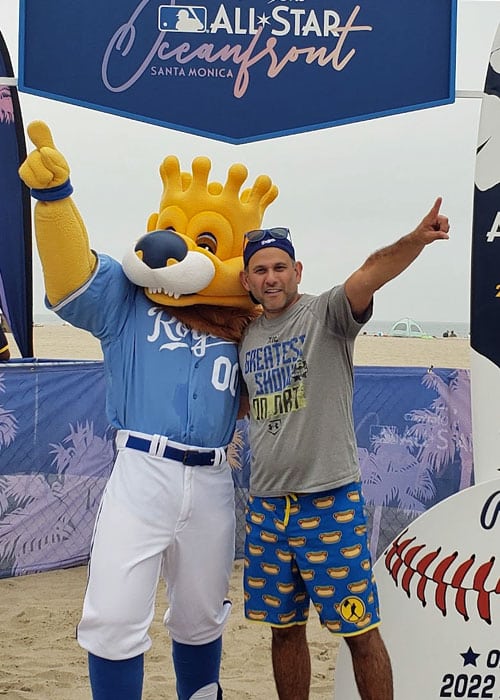
13. Rally Monkey – Los Angeles Angels
While the Angels are 1 of 3 MLB teams without an official mascot, the Rally Monkey debuted in 2000. During a tight game, video board operators took a clip of a monkey jumping around from the Jim Carrey movie “Ace Ventura: Pet Detective” and superimposed the words over it: “RALLY MONKEY!” The video was so popular that the team hired a white-haired capuchin monkey to star in original clips in future games. In 2009 when the Angels reached the post-season, the rally monkey’s popularity was renewed.
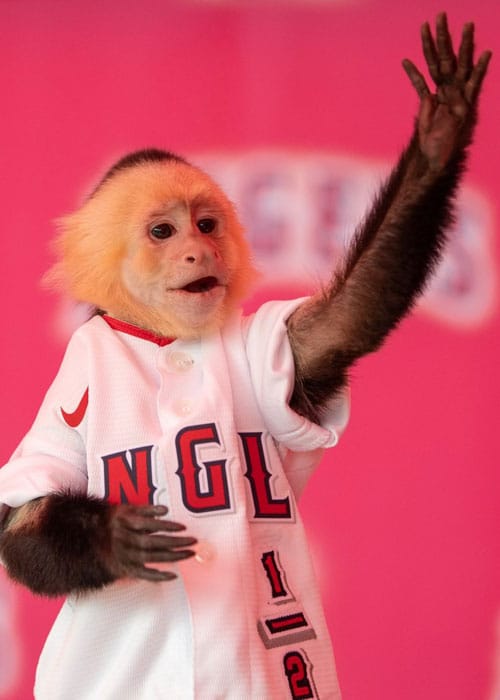
14. Bobblehead Character – Los Angeles Dodgers
While the Dodgers are 1 of 3 MLB teams without an official mascot, the Los Angeles Dodgers showed off a new mascot at the team’s home opener in 2014. The team claimed the big-headed fellow in a Dodgers jersey wasn’t a mascot, but was a “bobblehead character.” Ohhhh.
While the bobblehead character may have been short-lived as a mascot, a giant-sized larger-than-life ceramic bobblehead can still be found at the upper level of Dodger Stadium as recently as 2022.
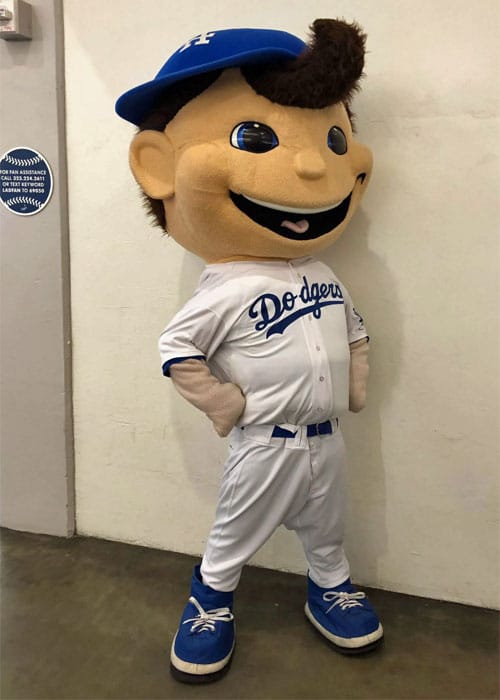
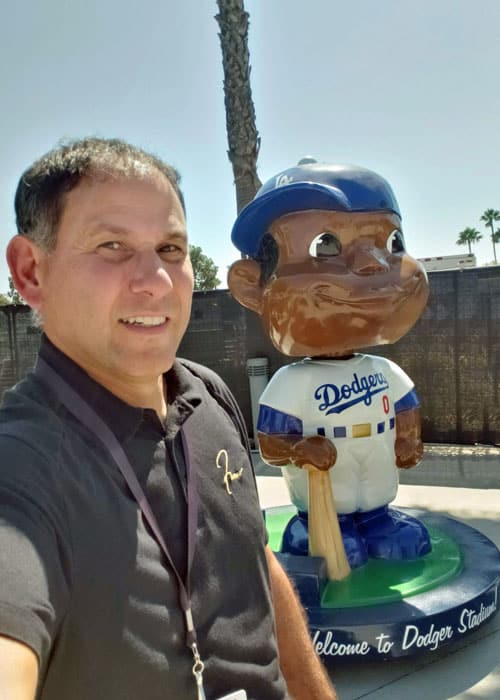
15. Billy the Marlin – Miami Marlins
Billy The Marlin was born in 1993. Resembling a marlin with limbs, he stands 8 feet tall and 250 pounds. The name is derived from the fact that a marlin is a billfish, a large fish characterized by a prolongation upper jaw which is rounded and spear-like. Billy the Marlin graduated from Atlantis University.
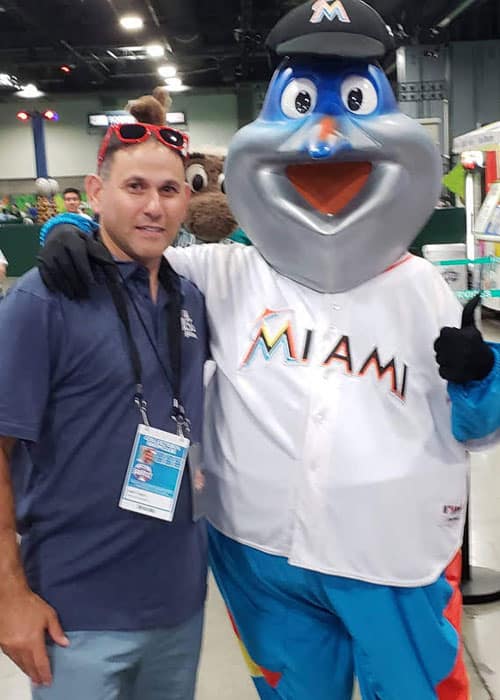
16. Bernie – Milwaukee Brewers
In 1970, when Brewers attendance at Milwaukee County Stadium was low, Milt Mason, a 69-year-old Brewers fan, swore to sit atop the scoreboard until the team could draw a home crowd of 40,000. It took 40 days. In front of a crowd of 44,387 on August 16, Mason descended from his trailer following a Brewers 4-3 win vs. the Indians. He died in 1973 as the original Bernie Brewer.
The Bernie Brewer mascot was a tribute to Mason, appearing as a cheerful man with a big mustache. In 1973, a beer-barreled chalet was built for him inside the stadium where he led the crowd in cheering. Following each home run and victory by the Brewers, he slid down and plunged himself into a huge beer mug in celebration. Bernie Brewer was a fixture at Brewers games until 1984 when the Brewers built new bleachers to replace the chalet, forcing Bernie in retirement. In 1993, by popular demand, Bernie Brewer returned in a full-body costume of a man, including a large foam head. The chalet was also rebuilt above the left-center field bleachers.
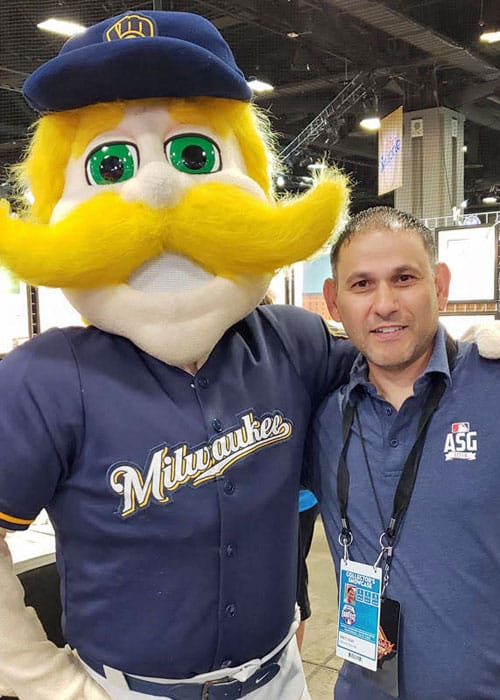
17. T. C. Bear – Minnesota Twins
T. C. was first introduced to Minnesota Twins fans in 2000. T. C. is loosely modeled after the Hamm’s Beer Bear, a mascot used in advertisements for Hamm’s Brewery, a brewery in Minnesota and an early sponsor for the Twins. The “T. C.” stands for the “Twin Cities” – Minneapolis and St. Paul. T. C. also has his own statue outside of Target Field where the the Twins play.
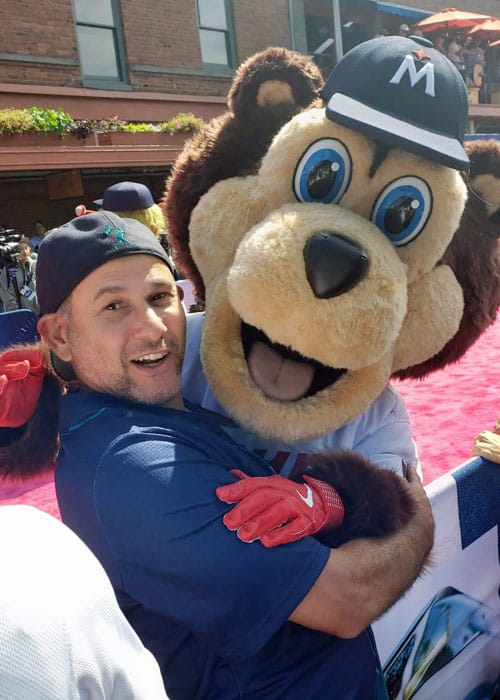
18. Youppi! – Montreal Expos
Youppi! was the Montreal Expos mascot from 1979 until the team became defunct after the 2004 season. He is an orange, furry creature with a white face that with a name resembling the phrase Yippee! or Hooray! in French. When the Expos franchise moved to Washington, the Canadian mascot stayed in town and became the official mascot of the NHL’s Montreal Canadiens, where he remains today. He is believed to be the only mascot in sports to ever switch teams.
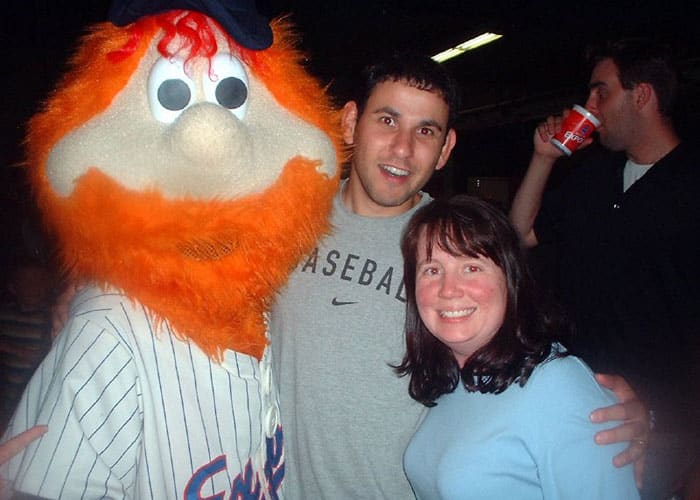
19. Mr. & Mrs. Met – New York Mets
Mr. Met was first introduced on the cover of game programs, yearbooks, and scorecards in 1963 when the Mets were playing at the Polo Grounds. When the Mets moved to Shea Stadium in 1964, fans were introduced to a live costumed version. Mr. Met is believed to be the first mascot in Major League Baseball (and perhaps all of sports) to exist in live form. He is a man with a large baseball for a head who regretfully lost his voice root, root, rooting for the home team. While he is quiet today, he can gesture in 12 different languages.
Mrs. Met debuted live, albeit briefly, in 1975 before being reintroduced in 2013.

20. Dandy – New York Yankees
While the Yankees are 1 of 3 MLB teams without an official mascot, it wasn’t always that way. Dandy was the mascot of the New York Yankees between 1979 and 1981. He was a large pinstriped bird that sported a Yankees hat and a mustache. Dandy resembled former Yankee catcher, Thurman Munson, who died in a plane crash one month after Dandy debuted. His name was a play on the classic American folk song “Yankee Doodle Dandy.”
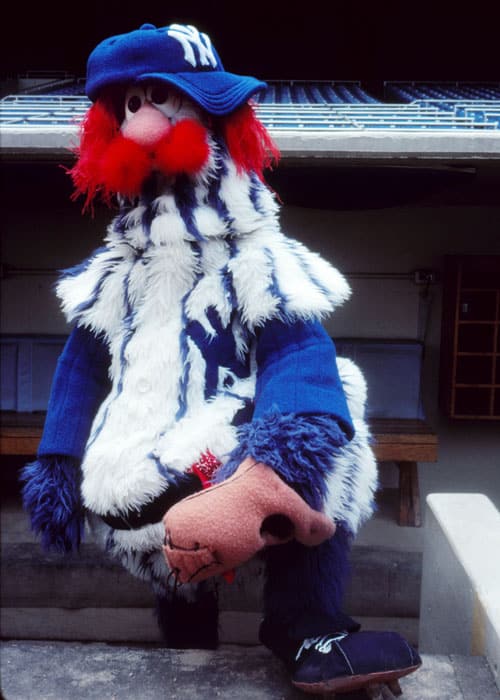
21. Stomper – Oakland Athletics
In 1997, the A’s created a new mascot and called him Stomper. The elephant symbol the Athletics use dates back to when a group of Philadelphia businessmen, headed by Benjamin Shibe, became the team’s first owners. When asked to comment, John McGraw, manager of the New York Giants of the rival National League proclaimed that “Shibe had bought himself a white elephant.” In response, A’s manager Connie Mack selected the elephant as the team across branding. The elephant has appeared on the Athletic uniform since 1988. Just like A’s pitcher Pat Venditte, Stomper can throw a baseball with both arms.
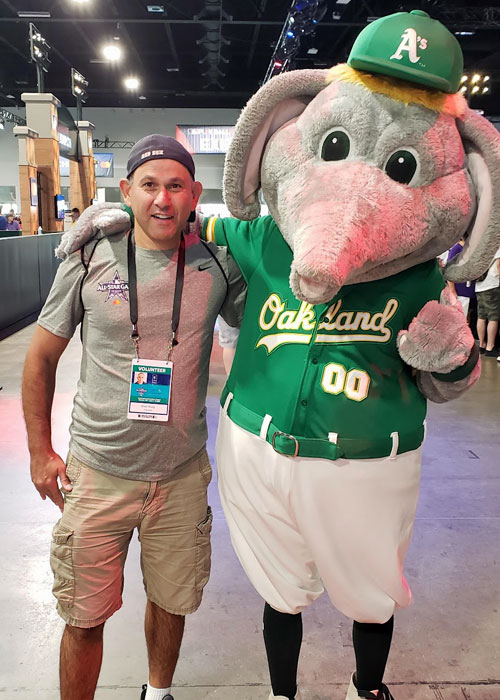
22. The Phillie Phanatic – Philadelphia Phillies
Since 1978, the Phillie Phanatic has been the official mascot of the Philadelphia Phillies. He is a large, furry, green bi-pedal creature with an extendable tongue. According to his official biography, the Phanatic is originally from the Galápagos Islands and is the Phillies’ biggest fan. The Phanatic rides around on an ATV. During games, the Phanatic wanders the stadium greeting fans and humorously mocks supporters of the opposition.
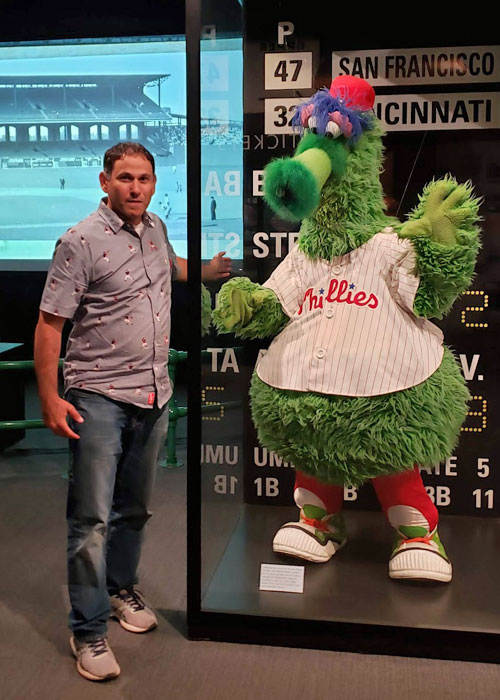
23. Pirate Parrot – Pittsburgh Pirates
The Pirate Parrot was born in 1979 and is derived from the classic story, Treasure Island, by Robert Louis Stevenson. In the book, Long John Silver is a pirate that owns a parrot named “Captain Flint.” That year, the Pirates went on to win the World Series. Unlike the parrot in the story, Pirate Parrot rides a motorcycle, loves popcorn and jams out to Taylor Swift.
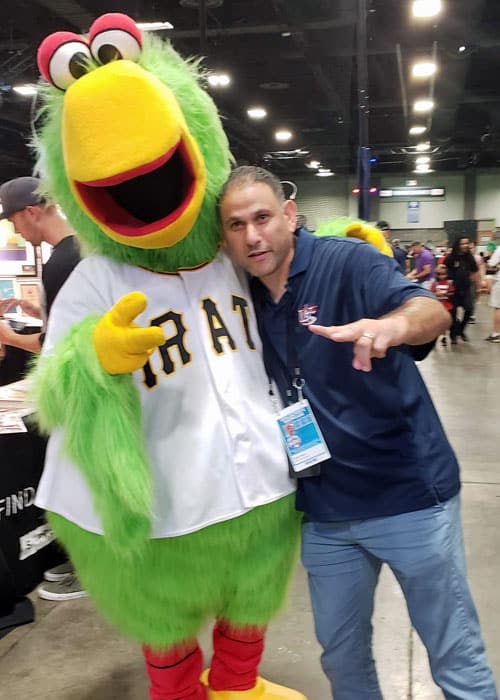
24a. The Famous Chicken – San Diego Padres
The Famous Chicken, also known as the San Diego Chicken, KGB Chicken, or just The Chicken, was a sports mascot played by Ted Giannoulas. He first appeared in a TV commercial for KGB-FM Radio in to distribute Easter eggs to children at the San Diego Zoo. Giannoulas then approached the San Diego Padres front office and was allowed to wander the stands at Padres games beginning in 1974. He mimed, joked with players and umpires, and connected with fans. Padres’ attendance, which had been the lowest in the league, doubled that summer.
The Chicken began to add appearances at concerts and sporting events, while continuing to perform at more than 520 San Diego Padres games in a row. The Chicken also appeared at many San Diego Clippers basketball games before the team moved to Los Angeles. The Famous Chicken last appeared at a Padres game in 2018. Through all the fame, The Famous Chicken has never been the official mascot of any San Diego sports team.

24b. Swinging Friar – San Diego Padres
The Swinging Friar has been a mascot with the Padres as early as 1958, when the Padres were still a member of the Pacific Coast League in Minor League Baseball. He is a cartoon-like character, pudgy, balding, and always smiling. He is dressed as a friar with a tonsure, sandals, a dark hooded cloak, and a rope around the waist. He swings a baseball bat.
The mascot was named after the Spanish Franciscan friars, who founded the Mission San Diego de Alcala, around which the city of San Diego began to emerge in the 18th century. The Padres joined Major League Baseball in 1969 and kept the popular mascot where he remains in San Diego to this day.

25. Lou Seal – San Francisco Giants
Luigi Francisco Seal is the full name of the San Francisco Giants mascot born in 1996. Lou Seal is a reference to the San Francisco Seals, the baseball club that was a mainstay of the Pacific Coast League from 1903 until 1957. Lou Seal has 3 World Series rings and has never missed a home game.

26. Moose – Seattle Mariners
Mariner Moose is the mascot of the Seattle Mariners and debuted in 1990, dancing on the field at the Kingdome. To become mascot, a contest for children 14 and under was held to select a one. After 2,500 entries, the club chose Mariner Moose. It wasn’t the last time Mariner Moose won a vote. In 1996, during the U.S. presidential elections, Nike developed an ad campaign entitled “Griffey in ’96” where Ken Griffey Jr. was running for President, with the Mariner Moose as his running mate.
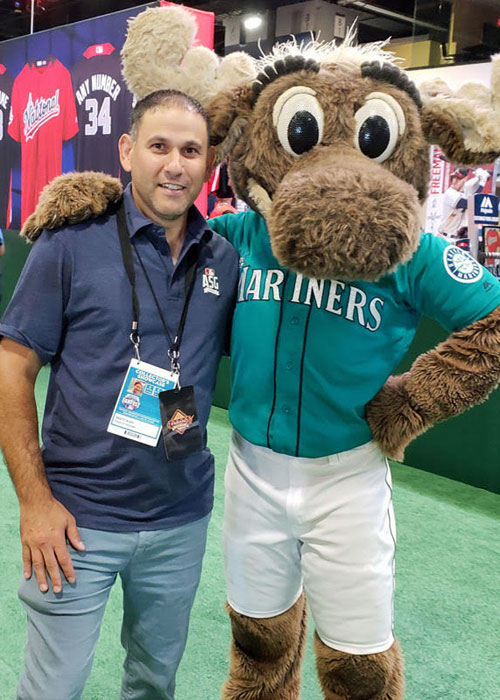
27. Fredbird – St. Louis Cardinals
Fredbird was introduced in 1979 by the Cardinals as a cardinal wearing the team’s uniform. His name is derived from “Redbird,” a synonym for a cardinal bird. Fredbird is known for his dancing, beaking the heads of supporters, and for throwing shirts into the stands.
Here, Fredbird is holding a painting by Artist Justyn Farano of the legendary Cardinals first baseman, Albert Pujols, entitled “The Gatekeeper” and catcher, Yadier Molina, entitled “Not On My Watch.”
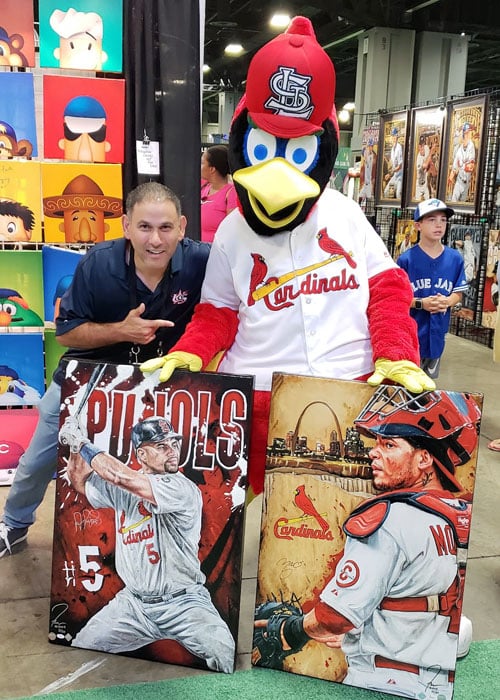
28. Raymond – Tampa Bay Rays
In 1998, Tampa Bay Rays scouts on a fishing trip in the Gulf of Mexico spotted a creature drawn to the boat by the smell of hotdogs on the hibachi. The seadog climbed aboard and won the scouts over with his silly antics. They made this fun loving fuzz ball the mascot for the new baseball team and named him Raymond. Today, Raymond is a furry blue creature wearing a large pair of sneakers and a backward baseball cap, completed with a Rays jersey. He resides in a condo inside Tropicana Field.
Here, Raymond is holding a painting by Artist Justyn Farano of the legendary Tampa Bay Rays third baseman, Evan Longoria, entitled “Fortitude.”
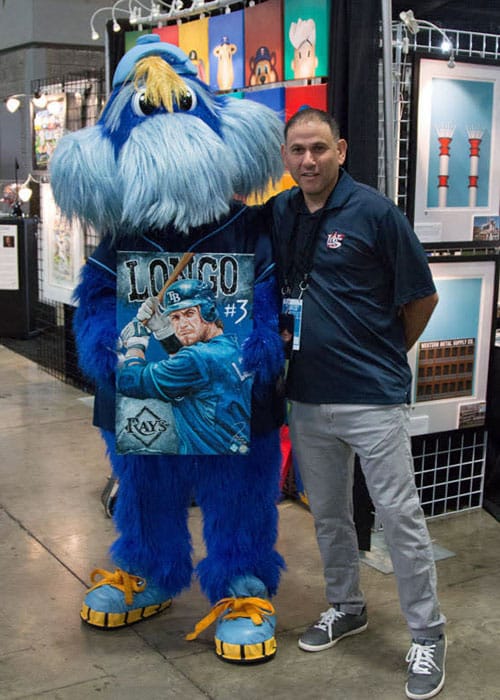
29. Rangers Captain – Texas Rangers
Rangers Captain was introduced in 2002. He is a palomino-style horse, dressed in the team’s uniform. He wears the uniform number 72 in honor of 1972, the year the Rangers relocated to the Dallas/Fort Worth Metroplex. Rangers Captain is an amazing driver, owning three vehicles he drives around Globe Life Park in Arlington.
Here, Rangers Captain is holding a painting by Artist Justyn Farano of the legendary Texas Rangers third baseman, Adrian Beltre, entitled “Smash N’ Bash.”
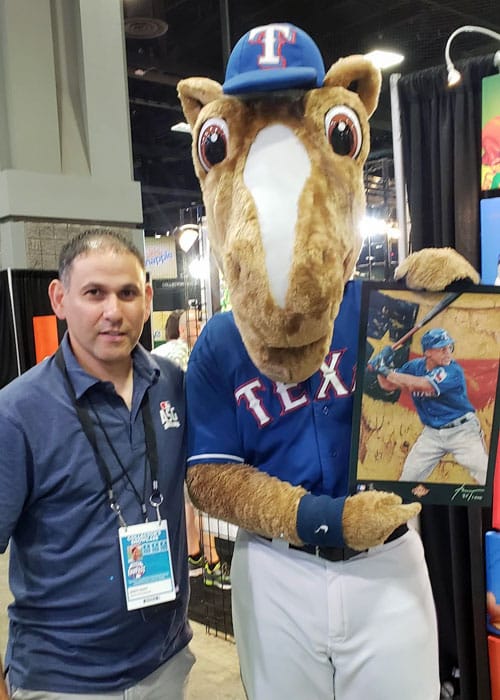
30. Ace – Toronto Blue Jays
At the end of the 1999 MLB season, the Toronto Blue Jays announced they were going to retire 20-year mascot BJ Birdy, replacing him two fresher blue jays. Ace and Diamond were introduced in 2000, but Ace became sole mascot of the Blue Jays in 2004. According to Ace’s website, his father invented bird stickers commonly found on windows and his mother was a goose feather supplier. Ace’s favorite hobby is ruffling opponents’ feathers.
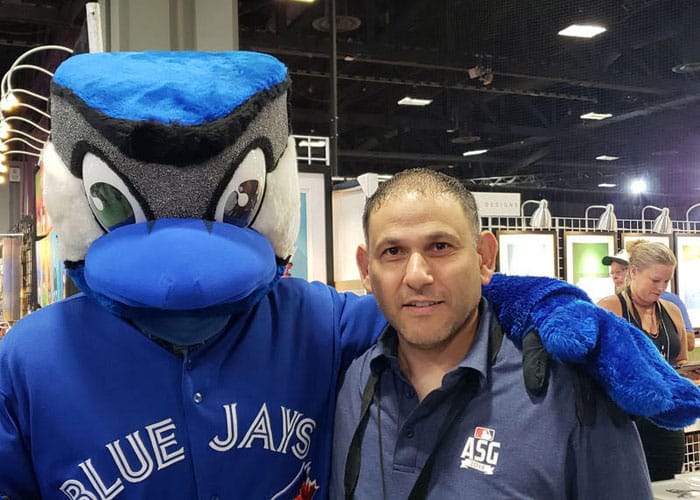
31. Screech – Washington Nationals
Screech is the mascot of the Washington Nationals and was hatched in 2005. He is a bald eagle, America’s national bird, who wears the uniform of the team. Screech is strong and eats almost everything, though his favorite food is gummy worms. Screech is also a dazzling dancer, full of loyal shenanigans directed at the opposing team.
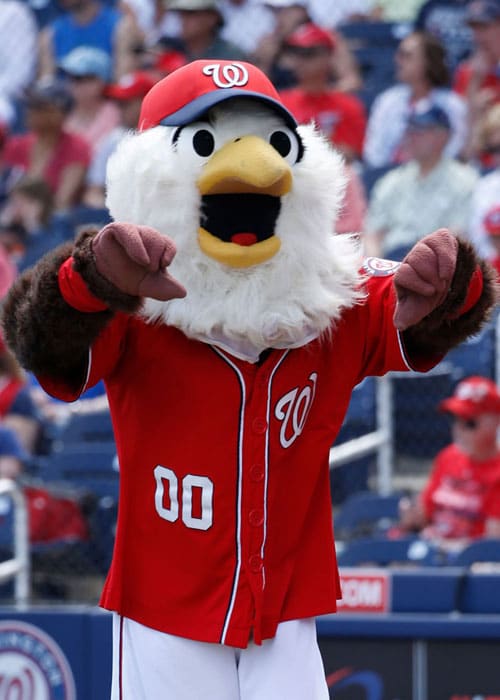
32. Domingo Ayala – Greatest Semipro Baseball Player
Domingo Ayala, through his silly baseball antics, is a symbol. He embodies everything great about baseball. In a game of failure, Ayala allows people to laugh at themselves as he reminds us that baseball, no matter how caught up in it we may become, is still just a game. Though not an MLB mascot, Domingo Ayala has been the face of amateur baseball since 1999 when he uploaded his first YouTube video.
At the age of two, Domingo Ayala started playing baseball. Soon, he became one of the best players in his hometown of Puerto Plata, Dominican Republic. In his pursuit to make it to the MLB, Ayala packed his bags and moved to the United States.
Now, the self-proclaimed best baseball player in the world still claims to be 17 years old. Though many believe him to be slightly older, no one has seen a birth certificate to disprove his claim. As he travels the world teaching baseball, his ultimate goal is still to make it to the big leagues. The last several years, he has made it to the MLB All-Star Game, and makes his rounds at Play Ball Park within the fan fest.
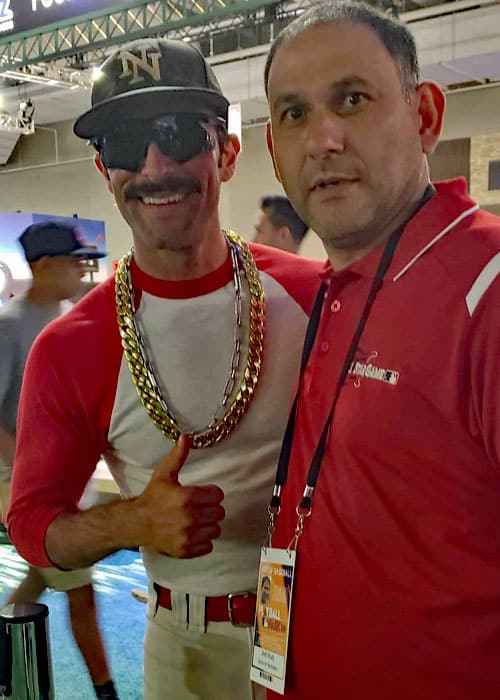
Making It to the Mascot Hall of Fame
As of 2023, there were 29 mascots elected to the Mascot Hall of Fame, located in Whiting Indiana. The 7 baseball mascots include Mr. Met (from the New York Mets), Oriole Bird (from the Baltimore Orioles), Phillie Phanatic (from the Philadelphia Phillies), Slider (from the Cleveland Indians), Sluggerrr (from the Kansas City Royals), Southpaw (from the Chicago White Sox), and Youppi! (formerly of the Montreal Expos).
Brett Rudy is a trailblazer in the world of baseball. As the founder of Baseball Is My Life and co-founder of Charity Hop Sports Marketing, he’s dedicated to elevating the sport and supporting the athletes who play it. With a passion for making a difference, Brett has created successful philanthropic initiatives like Charity Wines and 100 Innings of Baseball for ALS. He’s also the mastermind behind the Corked Bat Collection, Cooperstown Classic at the Baseball Hall of Fame, and Winterball for Toys for Tots. When he’s not working to improve the game, Brett can be found playing outfield in the Boston Metro Baseball League, living and breathing the sport he loves.